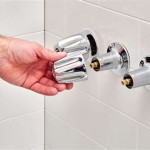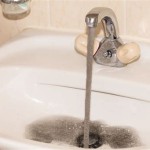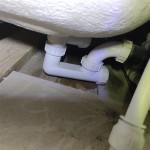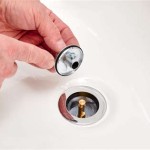How Do I Get My Dog In The Bathtub Game
Bathing a dog can be a necessary but sometimes challenging aspect of pet ownership. A dog's aversion to water, unfamiliar environments, or past negative experiences can contribute to resistance when bath time approaches. Successfully navigating this situation requires patience, understanding, and the implementation of strategic techniques to make the experience more palatable for the canine companion.
The level of difficulty in getting a dog into the bathtub varies significantly based on the individual animal's temperament, breed, and previous exposure to bathing. Some dogs may readily accept the bath as a routine activity, while others exhibit considerable anxiety and reluctance. Understanding the underlying causes of a dog's aversion is crucial for developing an effective plan to overcome it.
A primary consideration is the dog's inherent sensitivity to water. Some breeds, such as Retrievers, are naturally inclined towards swimming and water activities, while others, like Bulldogs, may be less enthusiastic. Beyond breed-specific tendencies, individual dogs may have had formative experiences that shaped their perception of water. A negative initial encounter with a forceful spray of water or an overly hot bath can create a lasting aversion.
The bathtub itself can be a source of anxiety for some dogs. The slick surface can be perceived as unstable and threatening, contributing to a feeling of vulnerability. The confined space may also trigger feelings of claustrophobia, especially in larger breeds. The echoing sounds of water filling the tub can be unsettling, further amplifying their apprehension.
Furthermore, a dog's overall personality and training also play a significant role. A dog that is generally anxious or fearful in new situations may be more prone to resisting bath time. A lack of consistent training and socialization can also contribute to their reluctance. A dog that has not been properly acclimated to handling and grooming may perceive the bath as an invasive and unpleasant experience.
Establishing a Positive Association with the Bathroom
The first step in overcoming a dog's aversion to the bathtub is to create a positive association with the bathroom environment. This involves gradually introducing the dog to the space in a non-threatening manner, without immediately forcing them into the bathtub. This process should be implemented incrementally, allowing the dog to adapt at its own pace.
Begin by simply allowing the dog to explore the bathroom on its own terms. Leave the door open and encourage them to enter with positive reinforcement, such as treats and praise. Avoid any sudden movements or loud noises that might startle them. The goal is to make the bathroom a familiar and comfortable space.
Once the dog is comfortable entering the bathroom, begin to introduce them to the bathtub itself. Start by placing treats and toys near the tub, gradually moving them closer and closer over time. Encourage the dog to sniff and investigate the tub without forcing them to jump in. This helps desensitize them to its presence.
If the dog willingly approaches the tub, reward them with enthusiastic praise and a high-value treat. This reinforces the positive association and encourages them to repeat the behavior. Avoid any negative reinforcement, such as scolding or punishing, as this will only exacerbate their aversion. The atmosphere should be one of positive reinforcement and encouragement.
Consider using a slip-resistant mat or towel in the bathtub to provide the dog with a more secure footing. This can significantly reduce their anxiety about the slippery surface. A small, elevated platform can also make the tub feel less deep and intimidating. Every effort should be made to make the tub feel less alien and more secure.
Also, introduce the sound of water gradually. Run a small amount of water in the tub while the dog is in the bathroom but not necessarily near the tub initially. If the dog is calm, reward them. Over a period of days, increase the amount of water and allow the dog to get closer to the tub during this process. This desensitization to the sound of water is an important step.
Using Positive Reinforcement and Luring Techniques
Once the dog is comfortable being in the bathroom and near the bathtub, the next step is to encourage them to actually get into the tub. This can be accomplished through positive reinforcement and luring techniques. Positive reinforcement involves rewarding the dog for desired behaviors, while luring involves using treats or toys to guide them into the tub.
Begin by placing a high-value treat just inside the tub. If the dog hesitates, encourage them with gentle coaxing and praise. Once they step into the tub to retrieve the treat, immediately reward them with more praise and another treat. This reinforces the connection between stepping into the tub and receiving a positive reward.
Repeat this process several times, gradually increasing the distance the dog has to step into the tub to reach the treat. You can also use a favorite toy to lure them into the tub. Throw the toy just inside the tub and encourage them to retrieve it. Once they are in the tub, shower them with praise and attention.
If the dog is particularly resistant, consider using a clicker to mark the desired behavior. A clicker is a small device that makes a distinct clicking sound. Whenever the dog performs the desired behavior, such as stepping into the tub, click the clicker and immediately reward them with a treat. The clicker acts as a signal that the dog has done something right, making the training process more efficient.
Avoid forcing the dog into the tub. This will only increase their anxiety and make it more difficult to get them in the future. If the dog refuses to enter the tub, simply try again later. Patience and consistency are key to success.
Once the dog is comfortable stepping into the tub, begin to introduce them to the sensation of water on their body. Start by gently pouring a small amount of lukewarm water on their back, using a cup or pitcher. Avoid spraying them directly in the face, as this can be frightening.
As the dog becomes more accustomed to the water, gradually increase the amount of water and begin to use a sprayer attachment. Maintain a calm and reassuring tone throughout the process. If the dog becomes anxious or fearful, stop immediately and try again later. The goal is to make the experience as positive and stress-free as possible.
Creating a Calming and Relaxing Bathing Environment
The bathing environment itself can have a significant impact on a dog's willingness to participate. Creating a calming and relaxing atmosphere can help reduce their anxiety and make the experience more pleasant. This involves paying attention to factors such as water temperature, noise levels, and the overall ambiance of the bathroom.
Ensure that the water temperature is lukewarm, not too hot or too cold. Dogs have sensitive skin, and extreme temperatures can be uncomfortable and even harmful. Test the water temperature on your own skin to ensure that it is comfortable.
Minimize noise levels in the bathroom. Turn off any loud appliances, such as the radio or television. The echoing sounds of water filling the tub can be amplified in a confined space, so avoid running the water too forcefully. Soft ambient music can help to create a more relaxing atmosphere.
Consider using calming aromatherapy products, such as lavender or chamomile essential oils. Diffuse the oils in the bathroom prior to the bath to help create a sense of relaxation. Avoid using essential oils directly on the dog's skin, as they can be irritating.
Provide the dog with a distraction during the bath. A lick pad coated with peanut butter or yogurt can keep them occupied and distracted from the bathing process. Alternatively, a floating toy can provide a source of entertainment.
Speak to the dog in a calm and reassuring tone throughout the bath. Avoid using harsh or scolding language. Gentle petting and praise can help to keep them calm and relaxed. Maintain eye contact and offer words of encouragement.
After the bath, thoroughly dry the dog with a soft towel. Avoid using a hairdryer, as the noise and heat can be frightening. If you must use a hairdryer, use it on a low setting and keep it at a safe distance from the dog's skin.
Reward the dog with a special treat or toy after the bath. This reinforces the positive association and makes them more likely to cooperate in the future. A post-bath cuddle session can also help to strengthen the bond between you and your dog.
Bath time should be a positive and enjoyable experience for both you and your dog. By following these strategies, you can help to overcome their aversion to the bathtub and make bath time a more pleasant experience for everyone involved. Remember that patience and consistency are key to success. With time and effort, even the most reluctant dog can learn to tolerate, and even enjoy, bath time.
Labrador Puppy Day Care Apps On Google Play
Dog Home Apps On Google Play

Bathroom Dog Game Wiki Fandom

5 Tips For Keeping Your Pup In The Bathtub During Bath Time Vetericyn
My Smart Dog Virtual Puppy Apps On Google Play
Adopt A Pet Corgi Apps On Google Play

With Your Dog Bath Cats Dogs Home

Puppy Kitty Game Salon On The App

Why Does My Dog Baths

Soggy Doggy Board Game For Kids Ages 4 8 Com
Related Posts








